At the beginning of our school year and through August blackberries are growing throughout Sonoma County. I see them in my yard, on hikes, by the side of the road, and in creek beds. I like to use these wild berries to introduce my students to the joys of foraging, making jam, and canning. They are full of antioxidants and fiber and make the greatest tasting jam. Wild blackberry jam! What could be better? If we're lucky we make enough to sell and raise a little money for our cooking program. We’ll let you know.
We use our jam throughout the year. We’ll put it on the English muffins, bagels, and other pastries we’ll be learning to make. We’ll make blackberry cobbler and crisp, wild blackberry linzer tart and ice cream. Have you ever had wild blackberry ice cream? It’s amazing!
Another great thing we do when we are making jam is to learn about pectin. Pectin naturally occurs in fruit but is added to jam to help it thicken and gel (usually in powdered form that you buy from the store). Apples can be very high in pectin and since Sonoma County has so many apples, I teach how to extract the pectin from them and we add this to our jam instead of the store-bought stuff. We learn to test the apple juice extract to see how much pectin is in it and how to concentrate it. It’s kind of science geeky but a cool thing to do. And who knew apples had all that gelling pectin in them just waiting for us to use in our jam?
Click here for recipes:
Pectin
Jam
Information about canning jam
Information about foraging for blackberries:
The trailing or low lying bushes are usually our native blackberry (Rubus ursinus). Its fruit is variable in form and color. The taller growing, brambly thicket blackberries are an invasive, non-native species, called the Himalayan berry (Rubus discolor or armeniacus). Mostly these are the ones we find. They are the ones growing in creek-beds and along the road. Himalayan berries are a juicy delicious berry. Some are quite large. But they are invasive and tend to drive out all other plants and are nearly impossible to get rid of once they take hold. The Himalayan has smaller flowers, an erect, often angled and furrowed stem (as compared to the round stem of many other varieties), and 3-5 oval leaflets with white hairs. Sometimes the native trailing blackberry will weave itself around the Himalayan berry.
It's a good idea to keep an eye out for poison oak while foraging.
Sources:
United States Dept of Agriculture http://plants.usda.gov
Sonoma County Wildflowers http://www.sonomawild.us
We use our jam throughout the year. We’ll put it on the English muffins, bagels, and other pastries we’ll be learning to make. We’ll make blackberry cobbler and crisp, wild blackberry linzer tart and ice cream. Have you ever had wild blackberry ice cream? It’s amazing!
Another great thing we do when we are making jam is to learn about pectin. Pectin naturally occurs in fruit but is added to jam to help it thicken and gel (usually in powdered form that you buy from the store). Apples can be very high in pectin and since Sonoma County has so many apples, I teach how to extract the pectin from them and we add this to our jam instead of the store-bought stuff. We learn to test the apple juice extract to see how much pectin is in it and how to concentrate it. It’s kind of science geeky but a cool thing to do. And who knew apples had all that gelling pectin in them just waiting for us to use in our jam?
Click here for recipes:
Pectin
Jam
Information about canning jam
Information about foraging for blackberries:
The trailing or low lying bushes are usually our native blackberry (Rubus ursinus). Its fruit is variable in form and color. The taller growing, brambly thicket blackberries are an invasive, non-native species, called the Himalayan berry (Rubus discolor or armeniacus). Mostly these are the ones we find. They are the ones growing in creek-beds and along the road. Himalayan berries are a juicy delicious berry. Some are quite large. But they are invasive and tend to drive out all other plants and are nearly impossible to get rid of once they take hold. The Himalayan has smaller flowers, an erect, often angled and furrowed stem (as compared to the round stem of many other varieties), and 3-5 oval leaflets with white hairs. Sometimes the native trailing blackberry will weave itself around the Himalayan berry.
It's a good idea to keep an eye out for poison oak while foraging.
Sources:
United States Dept of Agriculture http://plants.usda.gov
Sonoma County Wildflowers http://www.sonomawild.us
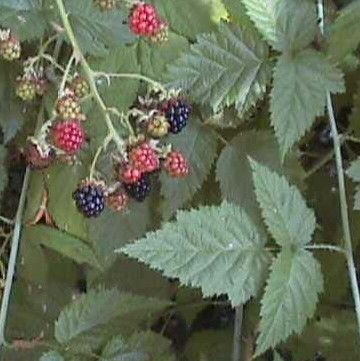
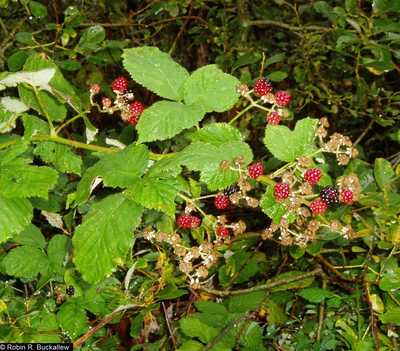
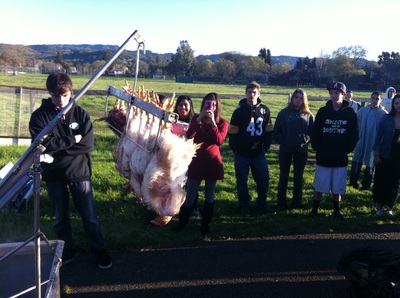
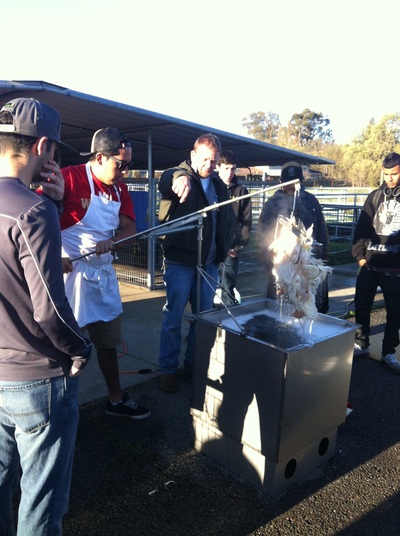
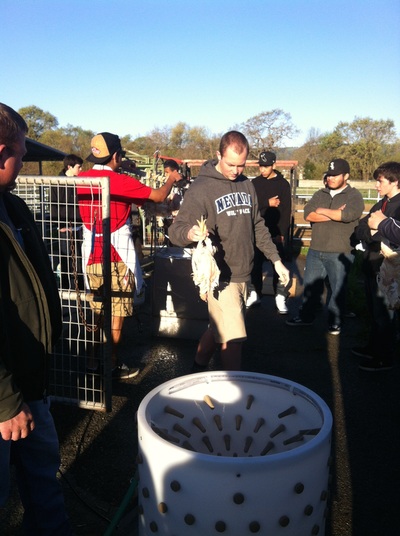
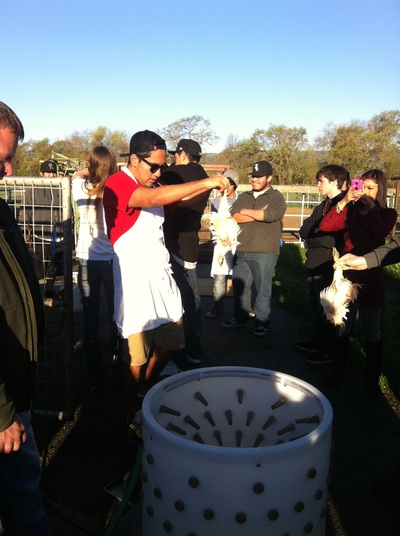
 RSS Feed
RSS Feed